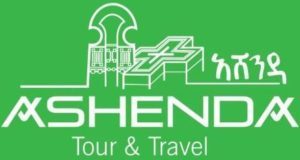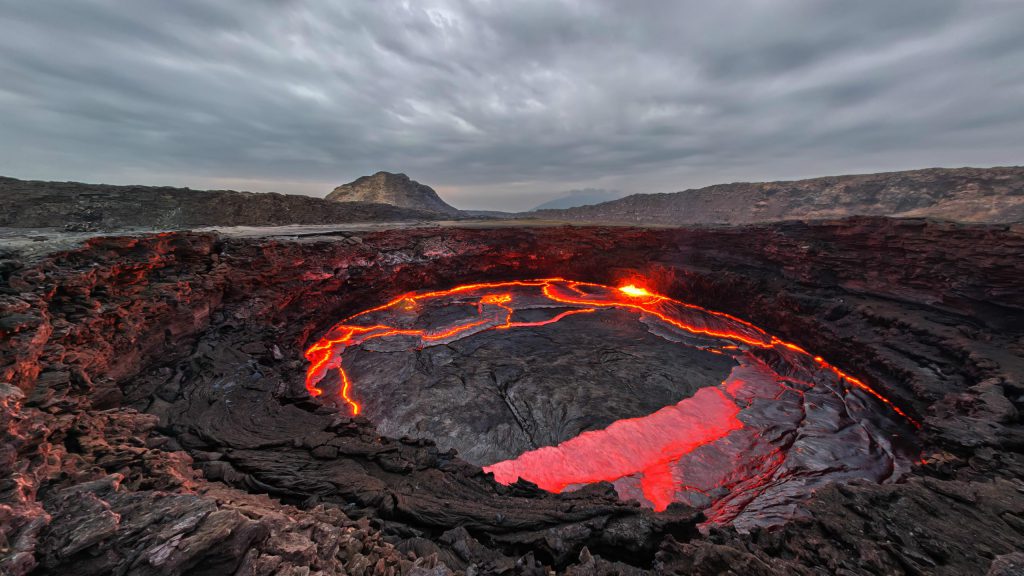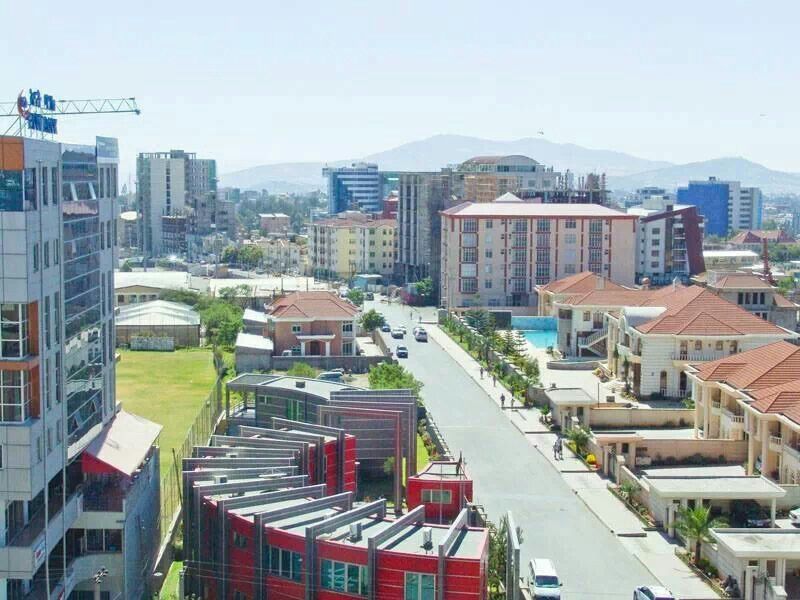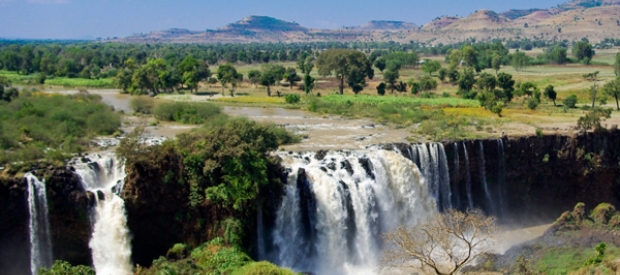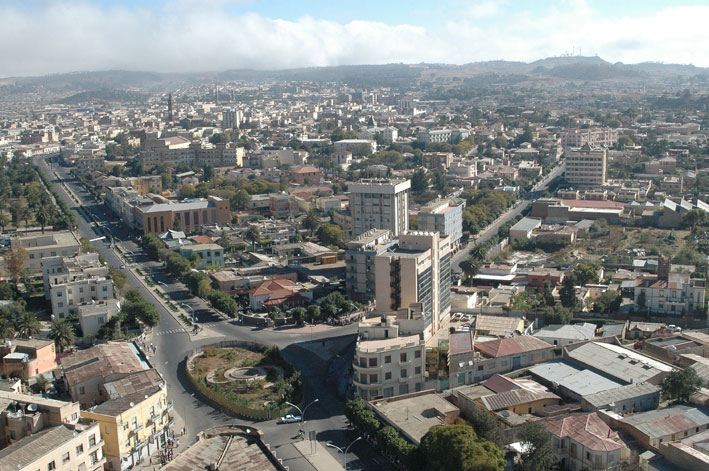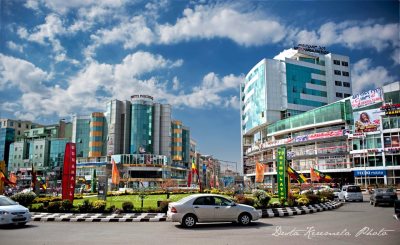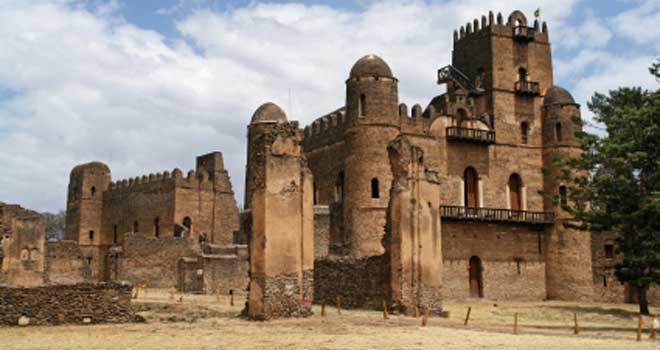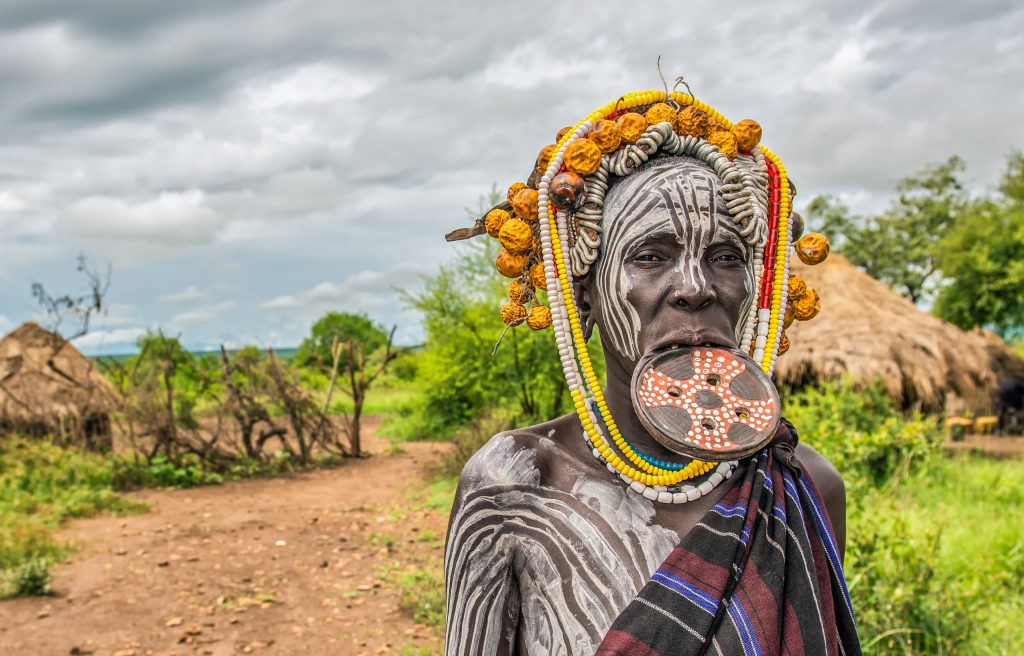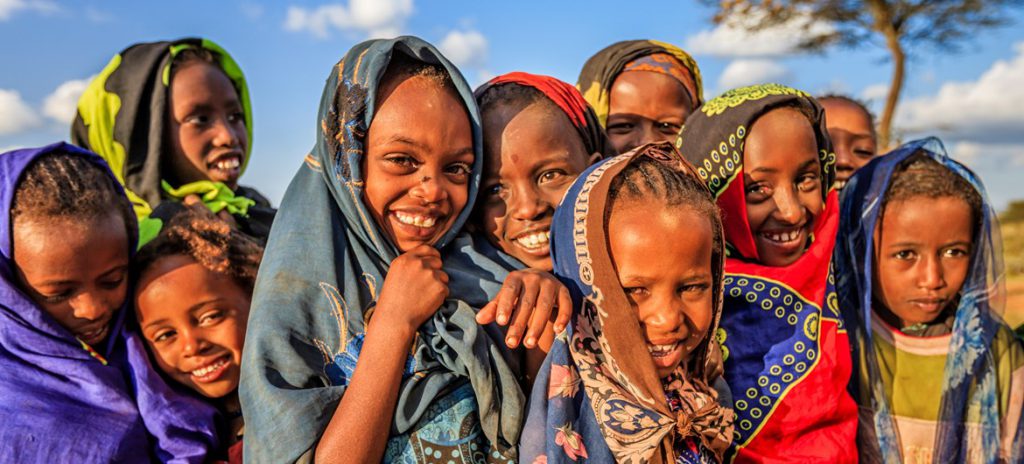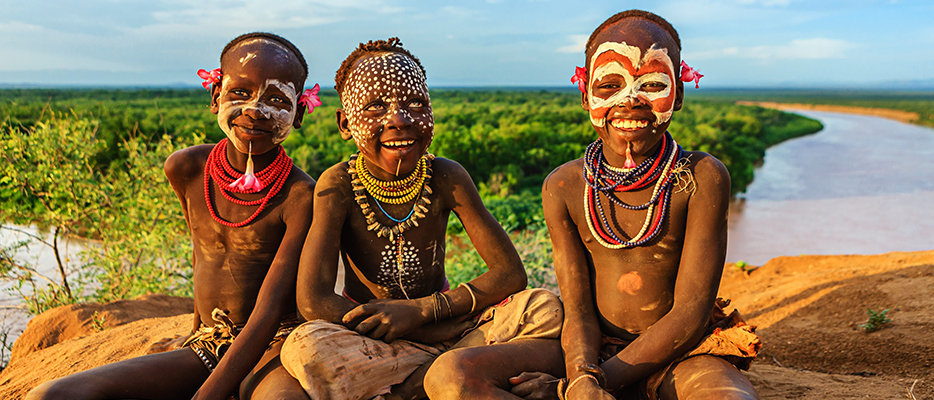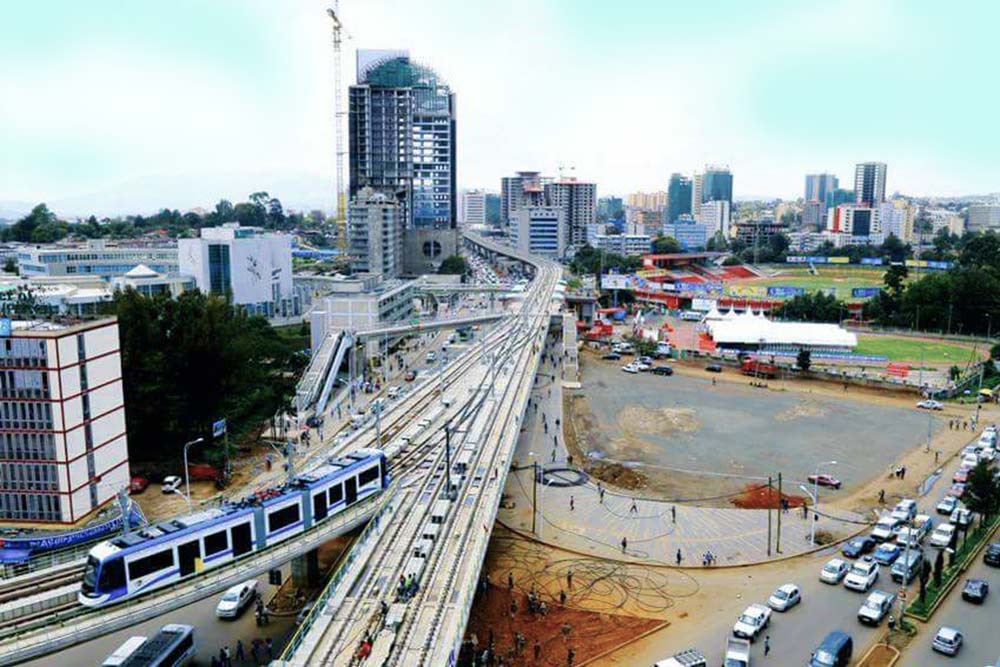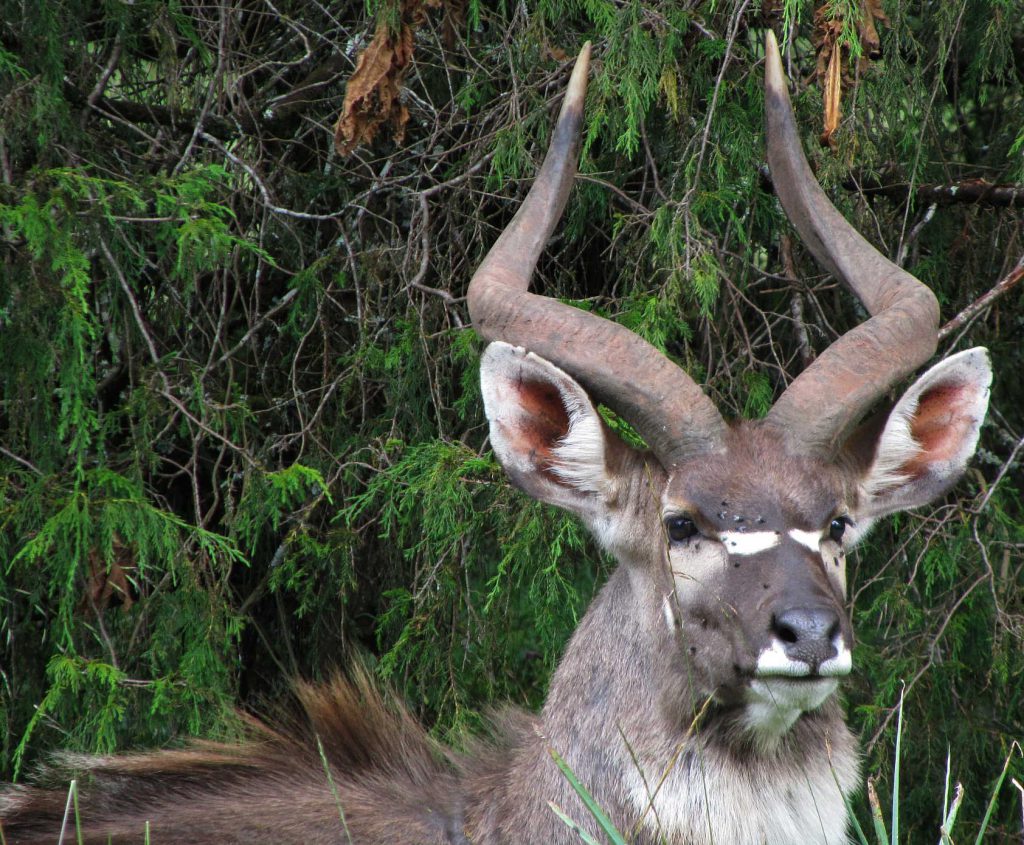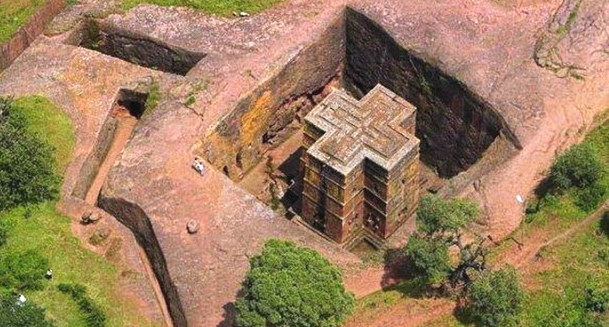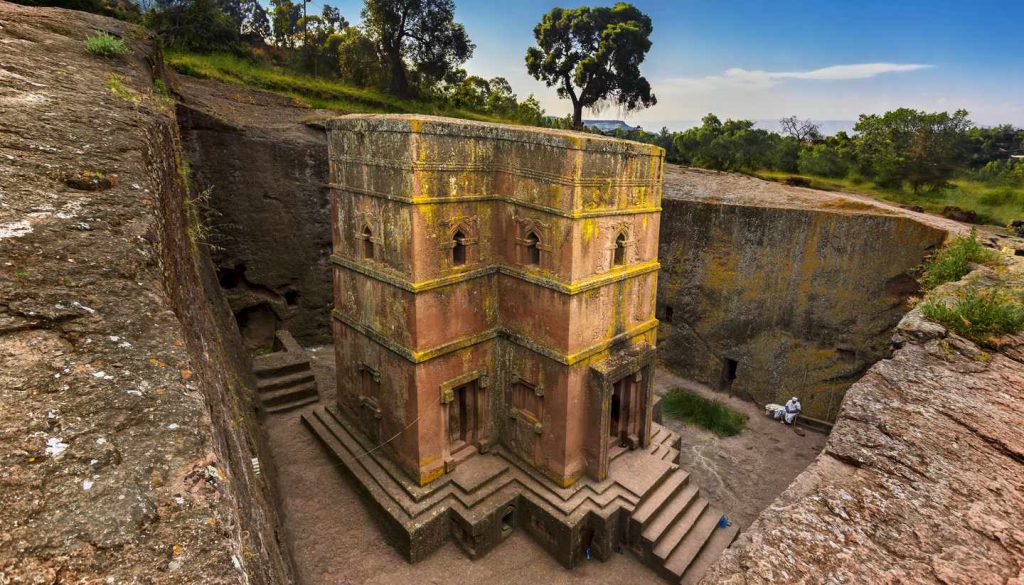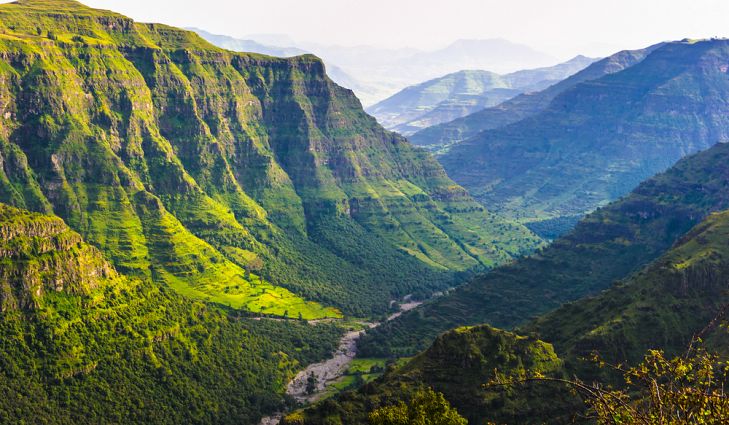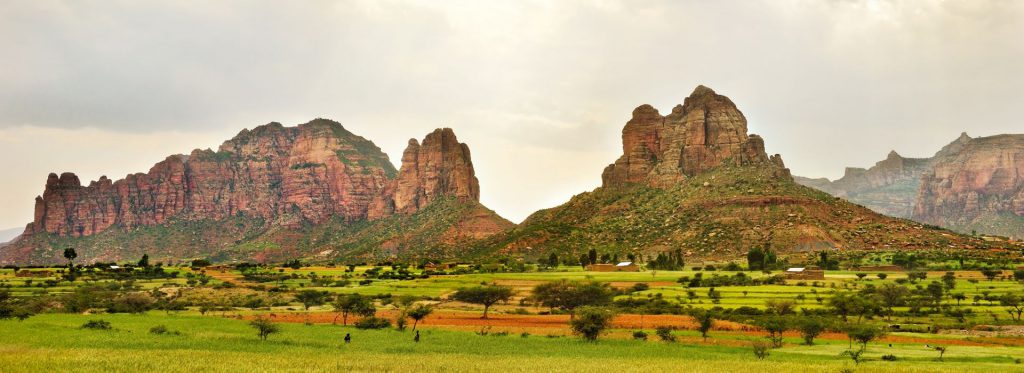Country Profile
Official Name: Federal Democratic Republic of Ethiopia (FDRE)
Flag and Emblem: The Ethiopian flag comprises three colors. In the center there is a national coat of arms. The three colors are set horizontally in equal dimension with green at the top, yellow in the middle, and red at the bottom. The national emblem is a blue circle with depiction; straight and equal lines of yellow come from all directions and join each other. A star is formed by the straight and equal lines with yellow rays radiating from the joints of the straight and equal lines. The national coat of arms on the flag reflects the hope of the nations, nationalities and peoples of Ethiopia, as well as of its religious communities to live together in unity and equality.
Resources: Ethiopia is a country richly endowed with huge manpower, vast arable land and a wide array of natural resources. Its climate, topography, rivers as well as other natural and bio-diversified resources make the country favorable particularly for agricultural investment. In fact, Ethiopia is one of the very few countries that are rich in bio-diversity. However, much of its potential has not yet been exploited. The country’s livestock wealth is among the leading in Africa and the world. There are several great rivers including cross-boundary ones. The immense and untapped waters can be used for irrigation and hydroelectric power generation. The hydroelectric potential existing in the country is estimated to be 60 billion kwh. Six of the major rivers also have the potential to produce 23,500 tons of fish per year. In addition, major lakes of the country have a potential of producing 30,000-40,000 tons annually. What has been exploited so far is not more than 15% of the potential. Geological studies have proven that Ethiopia has a significant amount of base, rare and precious metals. The country is also endowed with vast deposits of construction materials such as marble, limestone and granite along with industrial minerals like diatomite, silica sand, potash, phosphate, soda ash, salt, rock salt, caoline, feldspar and quartz.
Population: Based on the results of the May 2007 National population and Housing Census of Ethiopia, the projected population size of the country for the year 2012 is 84,320,987 of which males constitute 42,556,999 while females number 41,763,988.
Capital City: Addis Ababa, the capital and largest city in the country, is the seat of the Government of the Federal Democratic Republic Ethiopia, the African Union (AU), and the United Nations Economic Commission for Africa (ECA). Several other international organizations have their headquarters and branch offices in the capital.
Other important towns: Among other most important towns in the country are: Hawassa, Dire Dawa, Gondar, Dessie, Adama, Jimma, Harar, Bahir Dar, Mekele, Debere Markos and Nekemte. All these towns are important towns of trade and industry. They are connected to Addis Ababa through asphalt roads and most of them have good infrastructural facilities.
Religions: Christianity, Islam, animism and others.
Languages: Ethiopia is a country where more than 80 nations, nationalities and peoples live together peacefully. Its people altogether speak over 80 different languages. Amharic is the official language of Ethiopia. Nevertheless, the working languages of regional states differ. While English is taught in schools, French, Italian and Arabic are also widely spoken.
Calendar: Ethiopia has a unique ancient calendar. The calendar, which is about eight years behind the Western (Gregorian) calendar, consists of twelve months of thirty days each and an additional thirteenth month of five days (or six days in a leap year). Ethiopia entered its third millennium on September 12, 2007. The millennium celebration was officially declared as an African occasion by the 8th regular summit of the African Union.
Local Time: Ethiopia is in the GMT+3 time zone. Business hours vary according to the nature of the business. Normally government office hours are 8:30 a.m. to 12:30 p.m. and 1:30 P.m. to 5:30 p.m. from Monday through Thursday. Working hours on Friday are 8:30am to 11:30am and 1:30pm to 5:30pm.
The Constitution: It is the supreme law of the land. Human rights and freedoms emanating merely from being human are inviolable and inalienable. State and religion are separate. The state does not interfere in religious matters and vice versa. All Ethiopian languages enjoy equal state recognition and Amharic would be the working language of the Federal government. All persons are equal before the law and are guaranteed equal and effective protection, without discrimination on grounds of race, nation, nationality, or other social origin, color, sex, language, religion, political or other opinion, property, birth or other status. Every one has the right to freedom of thought, conscience and religion and the freedom, either individually or in community with others, and in public or private, to manifest his/her religion or belief in worship, observance, practice and teaching. Every person has the inviolable and inalienable right of life, privacy and the security of person and liberty. Every one has the right to hold opinions and has freedom of expression without interference. Freedom of the press and other media and freedom of artistic creativity is also guaranteed without the prohibition of giving access to information of public interest and any form of censorship. Every person has the right to assemble and to demonstrate together with others peacefully and unarmed and to petition. Besides, the constitution gives for any person the right to freedom of association for any cause or purpose.
System of Government: Federal democratic Republic. A new constitution adopted in 1995 introduced a federal system of government and established the Federal Democratic Republic of Ethiopia (FDRE). Federalism has not only maintained unity and peace among the peoples, but also prevented the dominance of the ruling party and enhanced public participation in national affairs. The federal government is responsible for national defense, foreign relations and general policy of common interest and benefits. The State Council has the power of legislation on matters falling under State jurisdiction. The Council has power to draft, adopt and amend the state constitution. The State administration constitutes the highest organ of executive power.
State Structure:
Form of Government: parliamentarian form of government.
State of the Federation: nine member states are delimited on the bases of settlement patterns, language identity and consent of the people concerned. Member states of the Federal Democratic Republic are:-
The State of
Tigray
The State of Afar
The State of Amhara
The State of Oromia
The State of Somalia
The State of Benshangul/ Gumuz
The State of the Southern Nations, Nationalities and Peoples.
The State of the Gambela people
The State of the Harari people
The Structure and division of power
Structure of the organs of state: The Federal democratic republic of Ethiopia comprises the Federal Government and the State members. Both have legislative, executive and judicial powers. The House of Peoples’ Representatives is the highest authority of the Federal Government. The House is responsible to the People. The State Council is the highest organ of the state authority. It is responsible to the People of the State.
Adequate power is granted to the lowest units of local government to enable the People participate directly in the administration of such units.
The Federal Houses: These are two houses: The House of Peoples’ Representatives and the House of the Federation. Members of the House of Peoples’ Representatives are elected by the people for a term of five years on the basis of universal suffrage and by direct, free and fair elections. The House of Peoples’ Representatives has legislative power in all matters assigned by the constitution to federal jurisdiction. A political party or a coalition of political parties with the highest number of seats in the House of Peoples’ Representatives assumes government power. The House of the Federation is composed of representatives of nations, nationalities and peoples. Each nation, nationality and people can be represented in the House of Federation by at least one member. Members of the House of the Federation shall be elected by the state council. The state councils can themselves elect representatives to the House of the Federation, or they can hold elections to have the representatives elected by the people directly.
President of the Republic: The president of the FDRE is the Head of state. The House of Peoples’ Representatives nominates the candidate for president. The nominee shall be elected president if a joint session of the House of Peoples’ Representatives and the House of the Federation approves his candidacy by a two-third’s majority vote. The term of office of the president will be six years and no person can be elected president for more than two terms.
The Executive: The highest executive powers of the Federal Government are vested in the Prime Minister and in the Council of Ministers. The PM and the Council of Ministers are collectively responsible for all decisions they make as a body. The Prime Minister is the chief executive, the chairman of the Council of Ministers, and the Commander-in-Chief of the national armed forces. The PM submits for approval to the House of Peoples’ Representatives nominees for ministerial posts from among members of the two Houses or from among persons who are not members of either House and possess the required qualifications. The Council of Ministers is responsible to the PM and, in all its decisions, is responsible to the House of Peoples’ Representatives. The council of Ministers ensures the implementation of laws and decisions adopted by the HPRS.
The Judiciary: The highest and final judicial power over Federal matters is vested in the Federal Supreme Court. The highest and final judicial power over State matters is vested in the State Supreme Courts. The House of Peoples’ Representatives can, by a two-thirds majority vote, establish nationwide, or in some parts of the country only, the Federal High Court and First-Instance Courts it deems necessary. Unless decided in this manner, the jurisdictions of the Federal High Court and of the First-Instance courts are hereby delegates to the State Courts. State can establish State Supreme, High and First-Instance courts. Judicial powers both at federal and state levels are vested in the courts. Courts of any level are free from any interference or influence of any governmental body, government official or from any other source. Judges can exercise their functions in full independence and can be directed solely by the law.
Economy: Ethiopia has pursued a market-oriented economy since 1992. Policy and reform measures introduced since then have led to an economic transformation and private sector participation. A privatization program embarked upon in 1994 has resulted in the privatization of over 250 public enterprises. The government has committed itself to eradicating poverty. The strategies worked out and implemented by the government have already begun to bear fruit as evidenced by the over 11% average annual economic growth in the last five years. The economic progress has put the country among the top performing economies in sub-Saharan Africa, particularly among the non-oil producing countries. The country has a vision to attain middle-income status within 20 years. Macroeconomic data indicate that Ethiopia is well placed to meet the Millennium Development Goals (MDGs) at the end of 2015. Apart from agriculture, the industry and service sectors are also recording double-digit growth, indicating that the country is attaining more broad-based economic growth, unlike in the past when the country was dependent on farming.
Investment: In line with the market-oriented economic policy of 1992, the investment regime has also liberalized since then. The Ethiopian Investment Agency (EIA), which is an autonomous government body, serves as a one-stop-shop for issuing investment licenses and investment facilitations. The New Market Oriented Economic Policy embraces wide reforms which include foreign private investments. Consequently, the private sector is encouraged to invest in most areas of the economy. Areas that were exclusively restricted to the government such as defense, industries, hydropower generation, telecommunications services are now open for private as well as foreign investors.
With an improved investment climate, Ethiopia has steadily continued to attract and expand domestic and foreign investment. In all, a total of 25,835 investment projects were licensed during the 1992/93-2006/07 period. Several factors work in Ethiopia’s favor as an emerging destination for investment. These include the existence of a one-stop service for new investment approvals, a large domestic market of over 84 million people, a liberalized economy, a strong growth record in recent years, fiscal stability, democratic government, high employer satisfaction with labor and the prevalence of peace and stability. A very low crime rate and one of the least corrupt bureaucracies are also investor friendly attributes. On-going civil service, private and public sector reforms, complemented by infrastructure upgrades have created one of the world’s most progressive business environments. Furthermore, the government has developed a range of incentives for investors engaged in new enterprises and expansion across range of sectors. For further information, visit: www.investethiopia.org.
Agricultural products: Endowed with wide-ranging agro-ecological zones and diversified resources, Ethiopia produces all types of cereals, fiber crops, oil seeds, coffee, tea, fruits and vegetables, cotton and sugar cane, and recently cut-flowers. Livestock products include cattle, sheep, goats, camels, chickens, equine, and honey. Considerable opportunities exist for new private investment in the production and processing of all agricultural products.
Export: Until recently a great part of the total export earning was accounted for by the agricultural sector in the form of raw or semi-processed commodities such as coffee, hides and skins, oil seeds and pulses. Realizing the need to reduce the shock in terms of trade, the new export development strategy adopted by the government emphasizes on improving export goods, diversifying into better-value agricultural products while developing labor-intensive goods and exploring and developing mineral and fuel deposits. Ethiopia offers a wide range of processed and semi-processed hides and skins to the world market. Some of the products, such as the Ethiopian highland sheepskin (which has gained an international reputation for making gloves), are known for their quality and natural characteristics. Ethiopian hide and skin exports include pickled sheep skin, wet blue sheep skin, crust sheep skin, wet blue goat skin, crust goat skin, crust cow hides, finished garment leather, finished glove leather, lining/upper leather, suede leather, full grain leather, embossed leather and patent leather. The export of finished leather and leather products (such as leather garments, footwear, gloves, bags and other leather articles) is also highly promising. With the largest livestock population in Africa, Ethiopia has an ample supply base for the export of live animals and meat. Ethiopia’s main exports of live animals and meat products include steers and yearlings; lowland sheep and goats; fresh and chilled lamb and mutton carcass; fresh and chilled goat carcass; fresh and chilled veal carcass and beef four quarter; fresh and chilled boneless veal and beef; frozen lamb, mutton and goat carcass and veal and beef special cuts. The main textile products manufactured in the country include cotton and nylon fabrics, acrylic yarn, woolen and waste cotton blankets and sewing thread. The domestic potential of cotton production as basic raw material is far more than the demand of the currently installed spinning capacity and the availability of cheap labor is one of the major parameters for considering this industrial sector as one of the strategic industries for export development. Ethiopia’s major oilseed and pulse exports include sesame seeds, nigger seeds, linseeds, sunflower seeds, groundnuts, rapeseeds, castor oil seeds, pumpkin seeds, haricot beans, pea-beans, horse beans and chick peas. The major vegetable export products include potatoes, green beans, okra, melon, white and red onions, shallots, cabbage, leeks, beetroot, carrots, green chilies, and lettuce. The main exportable fruits include oranges, mandarin, grapefruit, mangos, guavas, tomatoes, lemons and limes, while cut flower exports include statice, alliums, roses and carnations. The major gum products produced mainly for export are gum lobanum derived from boswellia, gum myrrh and oppoponex derived from commiphora and gum Arabic derived from acacia species. Minerals currently being exported include gold, platinum, marble, granite and tantalum. Ethiopia has also recently entered into the export of high quality dimensional stones (i.e., different types of unprocessed blocks, as well as processed marble, granite and limestone) suitable for both internal and external uses.
Imports: food items, textiles, machinery and transport equipment, manufactured articles, and petroleum products.
Banking & Currency: There are over a dozen commercial banks operating in the country. There are also 27 microfinance institutions. The local currency is the Ethiopian birr, made up of 100 cents. Notes are issued in denominations of 1, 5, 10, 50, and 100 birr. There are five different coins: 1, 5, 10, 25, and 50 cents. Currently, a dollar is exchanged for nearly 18 birr.
Electricity: Number of customers 1,164,464(2006) (as compared to 401,000 in1991). Number of electrified towns 900 (2006) (as compared to320 in1991).Under the on-going electrification program, the country has been able to supply more than 22% of the country with electric power supply.
Telecommunications: The number of fixed telephone subscribers was 881,726 in 2007 (as compared to 125,398 in 1991). Mobile phone subscribers are more than 2,000,000. The number of towns with telecom access was 902 by the middle of 2007 as compared to 512 in 1991.
Tourism: Ethiopia is truly a land of contrasts and mystery. The country has eight UNESCO registered World Heritage Sites. Ethiopia is an ancient nation; old beyond all imaginations. It is a place where ancient historical traditions have been preserved to date. One can trek some of the biggest African mountains or explore great rivers and lakes including Lake Tana, the source of the majestic Blue Nile River whose valley is one of the world’s greatest, longest and deepest gorges. In the Great Rift Valley a necklace of beautiful lakes lies beneath the splendid panorama of the Bale Mountains. Many kilometers north of there lies the Danakil Depression, one of the world’s most inhospitable but nonetheless dramatic landscape which is also one of the hottest places on earth.
Rivers: There are 9 major rivers that flow inside and outside of the country. The most famous is Abay, which is 1,450km long, 800km inside the territory. Lakes: There are 12 major lakes, the largest being Lake Tana with 3,600 square kilo meters of area. Mountains: There are 58 major mountains with heights of more than 2989meters above sea level. The highest mountain is Ras Dashen with 4,550meters. National Parks: There are 9 national parks, 8 game reserves and 3 sanctuaries. Ethiopia is home to 6500-7000 types of plants, 12% of which are entirely endemic. Endemic life: 31 mammals out of 277 and 16 birds out of 862 bird species existing in the country are endemic.
